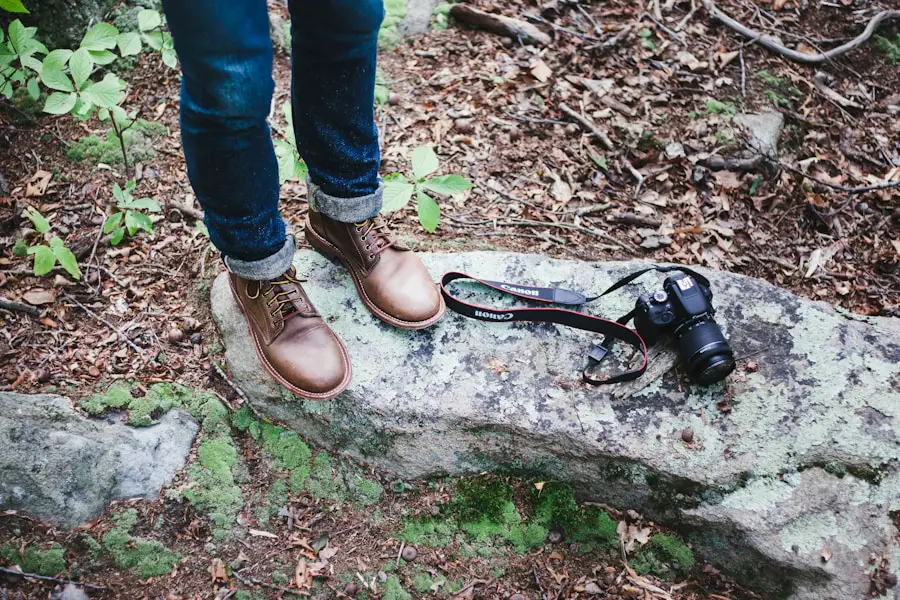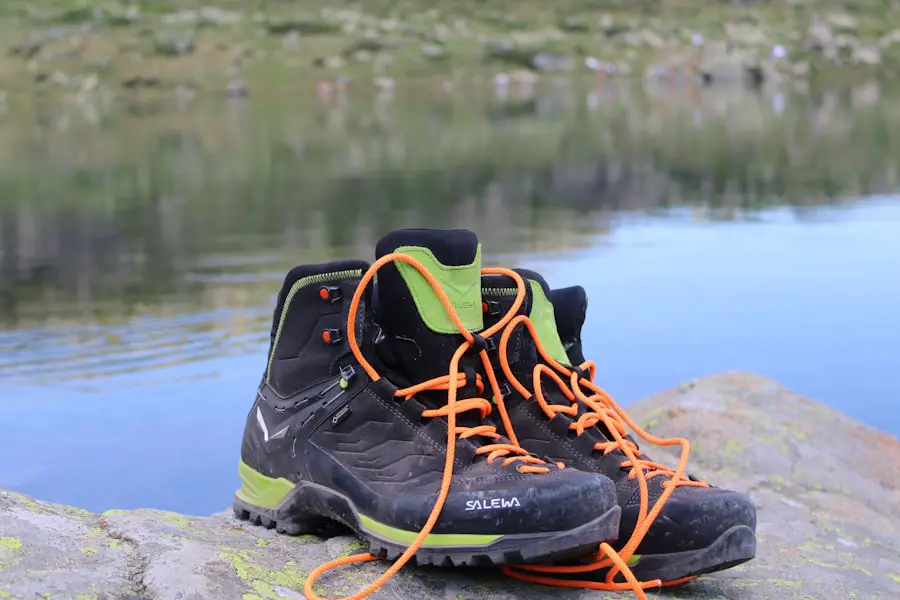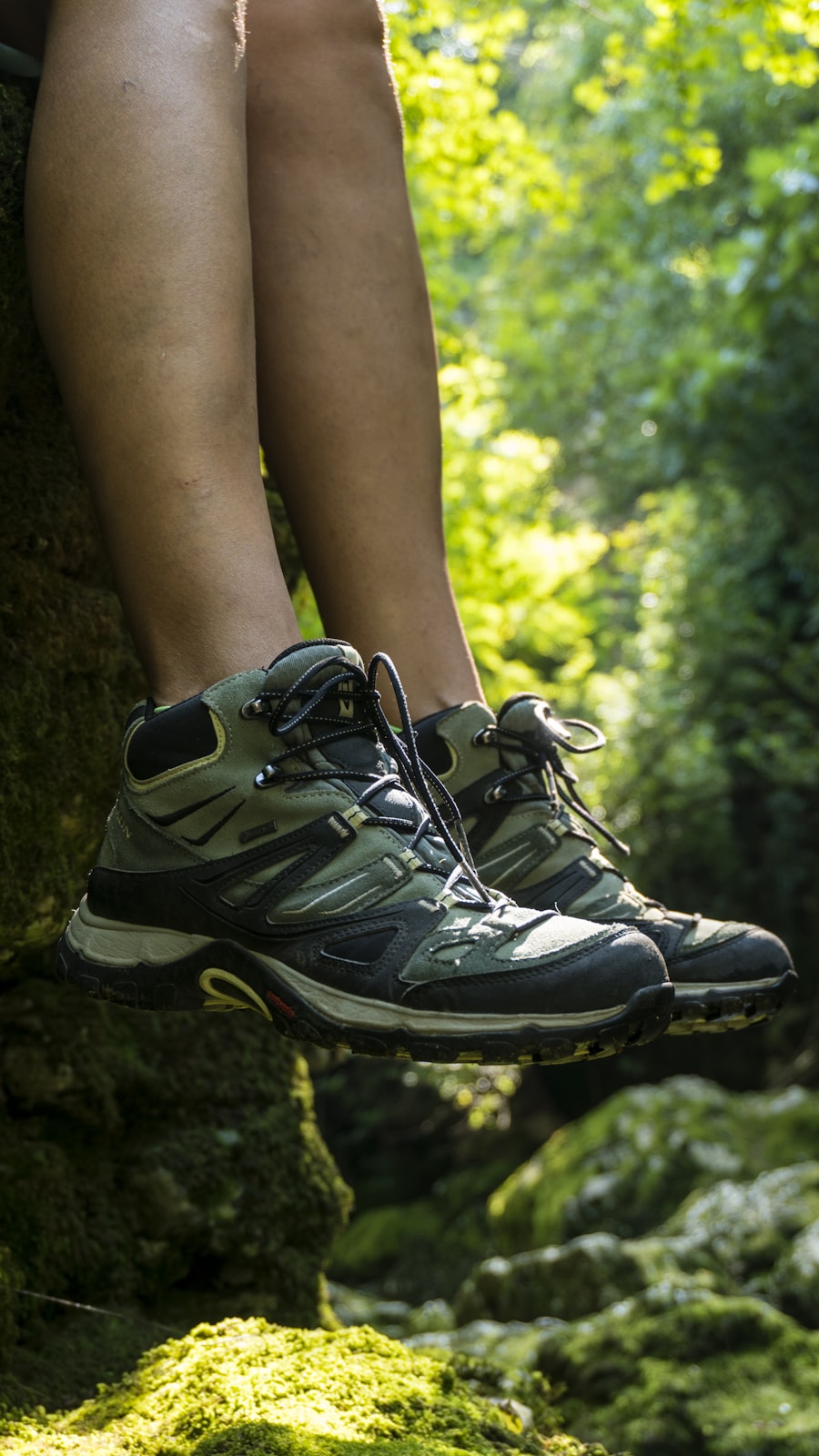Properly fitting hiking boots are paramount for anyone who enjoys trekking through nature, whether on well-trodden paths or rugged backcountry trails. The right fit not only enhances comfort but also significantly impacts performance and safety. When boots fit well, they provide the necessary support to the foot and ankle, reducing the risk of injuries such as sprains or blisters.
A good pair of hiking boots can mean the difference between an enjoyable day on the trail and a painful experience that could lead to early termination of a hike. Moreover, the terrain often encountered while hiking can be unpredictable, with varying elevations, rocky surfaces, and muddy patches. A well-fitted boot allows for better traction and stability, which is crucial when navigating challenging landscapes.
The right fit also ensures that the foot is securely held in place, preventing excessive movement that can lead to fatigue and discomfort. In essence, investing time in finding the perfect hiking boot fit is an investment in both safety and enjoyment during outdoor adventures.
Key Takeaways
- Properly fitting hiking boots are crucial for a comfortable and safe hiking experience.
- Hiking boots that are too big can cause blisters, hot spots, and discomfort.
- Hiking boots that are too small can lead to black toenails, numbness, and pain.
- Determining the right fit for hiking boots involves considering factors such as foot shape, sock thickness, and intended use.
- When trying on hiking boots, it’s important to walk around, test different sizes, and seek professional advice if needed.
The Consequences of Hiking Boots Being Too Big
Hiking boots that are too big can lead to a myriad of problems that can ruin an otherwise enjoyable hike. One of the most immediate consequences is the increased likelihood of blisters. When boots are oversized, the foot has room to slide around, causing friction against the boot’s interior.
This friction can create painful blisters, which may become severe enough to hinder movement and require treatment. In addition to blisters, larger boots can lead to calluses and other foot ailments due to the constant rubbing and pressure on certain areas of the foot. Another significant issue with oversized hiking boots is the lack of support they provide.
A boot that does not fit snugly around the heel and midfoot can result in instability while walking on uneven terrain. This instability can lead to ankle sprains or falls, particularly on steep descents or rocky paths. Furthermore, when a boot is too large, it can affect the hiker’s overall balance and posture, leading to fatigue more quickly than if they were wearing properly fitted footwear.
The combination of discomfort and potential injury makes it clear that wearing boots that are too big is a serious concern for hikers.
The Consequences of Hiking Boots Being Too Small

Conversely, hiking boots that are too small present their own set of challenges that can be equally detrimental to a hiker’s experience. One of the most immediate effects of wearing tight boots is pain and discomfort. A small boot can compress the toes, leading to conditions such as bunions or hammertoes over time.
This discomfort can escalate into sharp pain during hikes, making it difficult to continue on longer trails. Additionally, a cramped fit can restrict blood circulation, leading to cold feet or numbness, which can be particularly dangerous in colder climates. Moreover, small hiking boots can exacerbate fatigue during hikes.
When the foot is squeezed into a tight space, it has to work harder to maintain balance and stability. This extra effort can lead to quicker exhaustion, making it challenging to complete a hike or enjoy the scenery along the way. In extreme cases, wearing boots that are too small can lead to more severe injuries such as stress fractures or tendonitis due to the unnatural positioning of the foot within the boot.
Therefore, ensuring that hiking boots are not only comfortable but also appropriately sized is crucial for both performance and safety.
How to Determine the Right Fit for Hiking Boots
| Brand | Weight (per pair) | Waterproof | Ankle Support |
|---|---|---|---|
| Salomon | 2.2 lbs | Yes | Yes |
| Merrell | 2.5 lbs | Yes | Yes |
| Columbia | 2.8 lbs | Yes | Yes |
| Keen | 2.4 lbs | Yes | Yes |
Determining the right fit for hiking boots involves several key factors that go beyond simply choosing a size based on regular footwear. First and foremost, it is essential to measure both feet accurately since many people have one foot that is slightly larger than the other. When trying on boots, always opt for the size that accommodates the larger foot comfortably.
Additionally, it’s advisable to try on boots later in the day when feet tend to swell slightly; this will provide a more accurate representation of how they will feel during extended wear.
Another critical aspect of finding the right fit is considering the type of socks you plan to wear while hiking. Thick or cushioned socks will take up more space in the boot, so it’s wise to wear them when trying on potential purchases.A proper fit should allow for about a thumb’s width of space between your longest toe and the front of the boot when standing upright. This space ensures that your toes have room to move without being cramped during descents. Furthermore, pay attention to how your heel feels; it should be snug without slipping when you walk.
Tips for Trying on Hiking Boots
When trying on hiking boots, there are several practical tips that can enhance your fitting experience. First, always try on both boots and walk around in them for at least 10-15 minutes. This allows you to assess comfort levels and identify any pressure points that may become problematic over time.
Pay attention to how your feet feel as you walk; they should feel secure without any pinching or excessive movement. Additionally, consider testing the boots on an incline if possible. Many outdoor retailers have ramps or inclines available for customers to try out hiking boots in a more realistic setting.
Walking downhill will help you gauge whether your toes hit the front of the boot, which could indicate that they are too small. Conversely, walking uphill will help you determine if your heel lifts excessively or if there’s too much space in the toe box. Finally, don’t hesitate to ask for assistance from knowledgeable staff who can provide insights into different brands and styles based on your specific needs.
Understanding the Different Types of Hiking Boot Fits

Hiking boots come in various fits designed for different types of activities and foot shapes. The three primary categories include narrow, regular, and wide fits. Narrow-fit boots are ideal for individuals with slender feet who often struggle with excess space in standard sizes.
These boots provide a snug fit around the midfoot and heel, ensuring stability during hikes. Regular-fit boots cater to most hikers with average foot dimensions and offer a balanced fit that accommodates various sock thicknesses without compromising comfort or support. Wide-fit options are designed for those with broader feet or those who prefer extra room in their footwear.
Understanding these categories is essential when selecting hiking boots because each type addresses specific anatomical needs and preferences.
How to Adjust Your Hiking Boots for the Perfect Fit
Even after selecting a pair of hiking boots that seem ideal, minor adjustments may be necessary to achieve a perfect fit. One common method is adjusting lacing techniques; different lacing patterns can help alleviate pressure points or improve heel lock. For instance, using a heel lock lacing technique can prevent heel lift by creating additional tension around the ankle area.
In some cases, insoles can also be replaced or added for enhanced comfort and support. Custom orthotic insoles can provide additional arch support or cushioning tailored to individual foot shapes and needs. Additionally, consider using thicker socks if you find your boots are slightly loose; this can fill any gaps without compromising comfort significantly.
Regularly checking and adjusting your lacing and insoles can ensure that your hiking boots remain comfortable throughout their lifespan.
The Importance of Regularly Checking the Fit of Your Hiking Boots
The fit of hiking boots should not be considered static; it requires regular assessment as feet can change over time due to factors such as weight fluctuations or age-related changes in foot structure. Regularly checking the fit ensures that any issues are addressed before they lead to discomfort or injury during hikes. It’s advisable to try on your hiking boots periodically, especially before embarking on longer treks or after extended periods of inactivity.
Additionally, inspecting the interior of your boots for wear and tear is crucial as well; materials may compress over time, affecting overall fit and support. If you notice any significant changes in how your boots feel—such as increased slippage or discomfort—it may be time to reassess their suitability or consider investing in a new pair altogether. By maintaining awareness of how your hiking boots fit over time, you can ensure continued comfort and safety on all your outdoor adventures.
When it comes to hiking boots, finding the right fit is crucial for a comfortable and safe outdoor experience. Some may wonder whether their hiking boots should be too big or too small. An article on TakeTravelInfo discusses the importance of minimalist travel backpacks for spring adventures, highlighting the need for lightweight and functional gear to enhance your outdoor experience. Just like choosing the right backpack, selecting the correct size of hiking boots is essential for a successful hike.
Love travel? Join Our Facebook Community
FAQs
What size should my hiking boots be?
It is recommended that your hiking boots should be neither too big nor too small. They should fit snugly, with enough room for your toes to wiggle and for your feet to swell during long hikes.
What are the consequences of wearing hiking boots that are too big?
Hiking boots that are too big can lead to blisters, hot spots, and discomfort. Your feet may slide around inside the boots, causing friction and potential injury.
What are the consequences of wearing hiking boots that are too small?
Hiking boots that are too small can cause pain, numbness, and even long-term foot issues such as bunions or hammertoes. They can also lead to black toenails and other discomforts.
How should hiking boots fit?
Hiking boots should fit snugly around the heel and midfoot, with enough room in the toe box for your toes to wiggle. Your heel should not lift up when you walk, and there should be no pressure points or areas of discomfort.
Should I try on hiking boots in the afternoon?
It is recommended to try on hiking boots in the afternoon or evening, as your feet tend to swell throughout the day. This will give you a better idea of how the boots will fit during a long hike.
